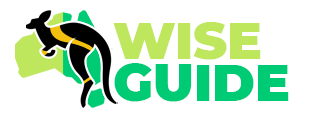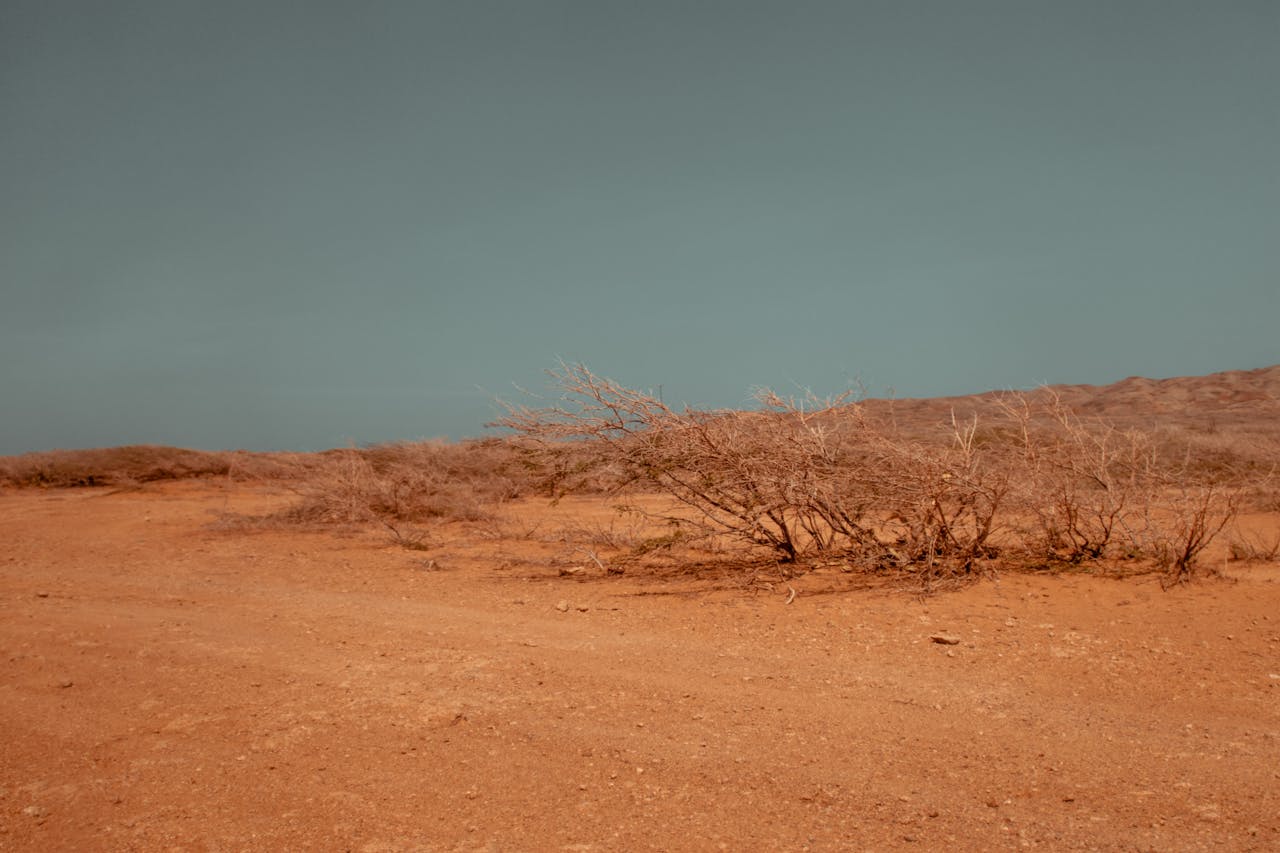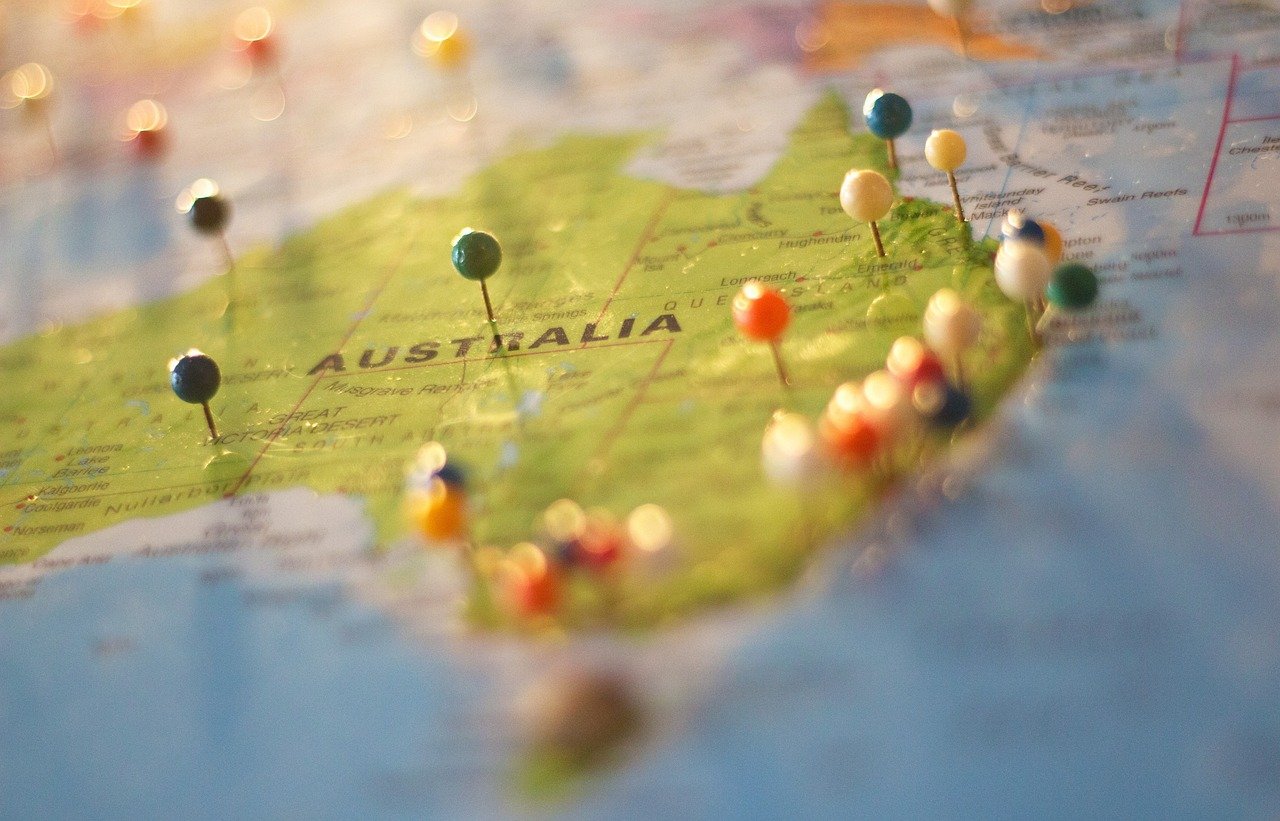What Is the Most Dangerous Animal in Australia? Exploring Deadly Wildlife
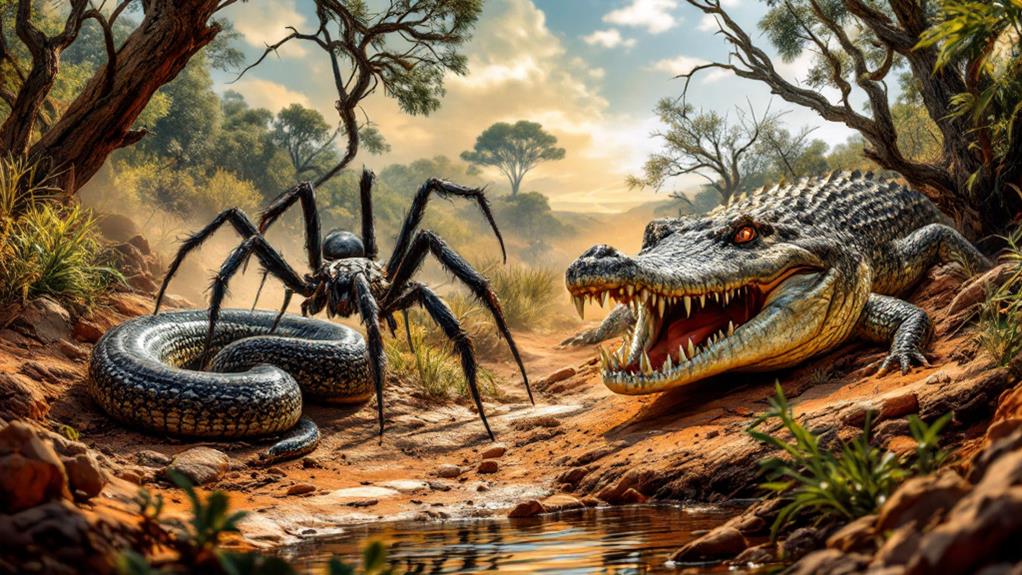
Australia's most dangerous animal is arguably the Box Jellyfish, which you'll find in northern coastal waters. Its venom can cause cardiac arrest, making it responsible for more fatalities than sharks. Meanwhile, the Inland Taipan, with the world's most toxic snake venom, and the powerful Saltwater Crocodile, known for its aggressive nature, add to the continent's reputation for deadly wildlife. Watch out as well for the Stonefish, which delivers a sting as painful as it sounds. Staying informed about these creatures and their behaviors can help guarantee safe encounters during your travels. There's more to uncover about these fascinating yet perilous animals.
Australia's Deadliest Creatures
When you think about dangerous animals, Australia probably tops the list with its array of deadly creatures. The box jellyfish reigns supreme as the most toxic animal on Earth. Its venom can cause death in mere minutes, and it's responsible for more fatalities in Australia than sharks. Encountering one of these in Australian waters is a serious risk due to its potent venom.
Inland taipans, although rarely seen, hold the title of the world's most venomous snake. Their venom is lethal enough to kill multiple adults with a single bite. Despite their fearsome reputation, their remote habitat means encounters with humans are uncommon.
Saltwater crocodiles are another iconic Australian threat. These massive reptiles can grow over 20 feet long and are notoriously aggressive, with a bite powerful enough to cause fatalities in recorded human attacks.
The Sydney funnel-web spider's venom is particularly harmful to humans, but thanks to an effective antivenom introduced in 1981, no deaths have occurred since. Finally, the eastern brown snake is notorious for causing more snakebite deaths in Australia than any other species. It's aggressive when threatened and often found in urban areas, adding to its danger.
Venomous Snakes and Reptiles
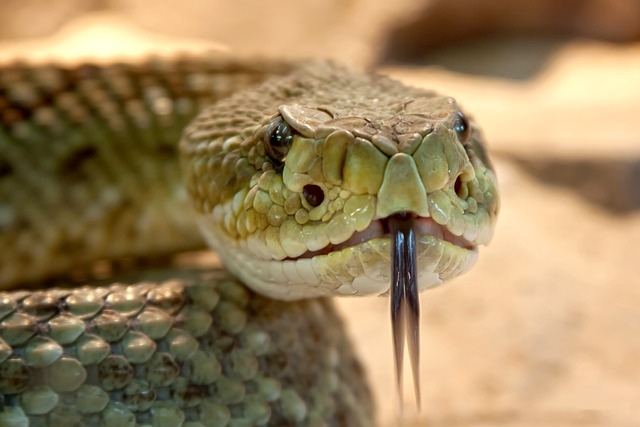
Australia's reputation for hosting some of the deadliest creatures extends prominently to its venomous snakes and reptiles. With over 172 snake species, more than half are venomous, making Australia a hotspot for dangerous snakes. Among these, the Eastern Brown Snake stands out, responsible for more than half of the country's snakebite fatalities. Its potent venom and aggressive behavior when threatened make it particularly menacing.
The Inland Taipan, known as the world's most venomous snake, has venom 50 times more toxic than that of the infamous black mamba. A single bite from this snake can kill multiple adults, making encounters with it extremely dangerous. Other formidable species include the Tiger Snake and Coastal Taipan, both capable of delivering lethal bites if not treated with antivenom quickly. Their aggression and potency demand respect and caution.
Meanwhile, the red-bellied black snake, though venomous, is generally less aggressive and often found in urban areas. This highlights the importance of educating yourself about snake behavior to prevent unnecessary conflicts. Understanding these reptiles and respecting their habitats can greatly reduce the risk of dangerous encounters in Australia's wild landscapes.
Marine Threats and Hazards
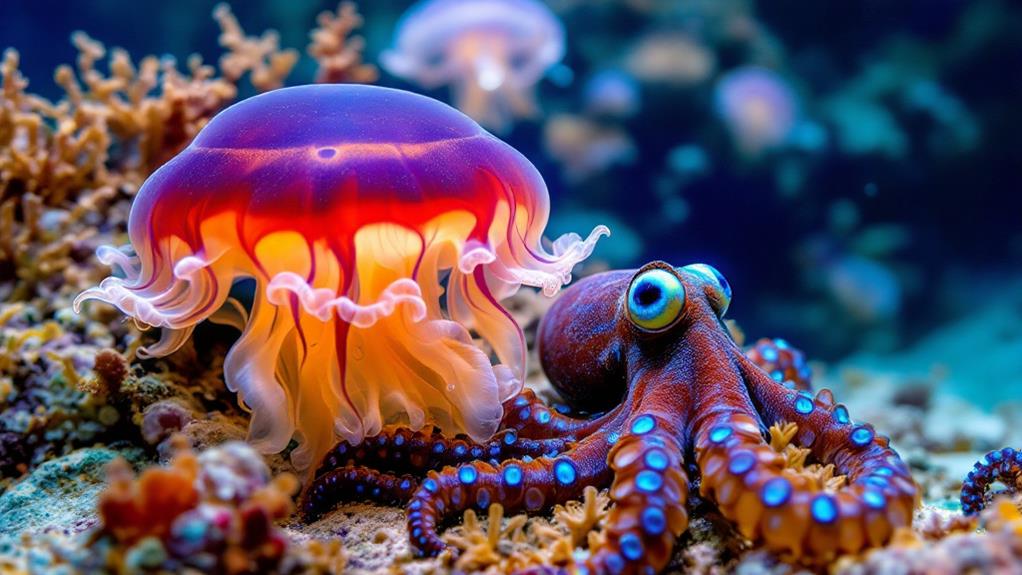
Australian waters are home to numerous marine threats, each more perilous than the next. Among these, the box jellyfish stands out as possibly the most dangerous. Found in northern coastal waters, it's considered the most toxic animal on Earth. Its venom can cause death within minutes by affecting both the heart and nervous system. You should exercise caution in these areas, as encounters can be deadly.
Another dangerous inhabitant is the blue-ringed octopus. Although it's small, its venom can cause paralysis and respiratory failure. There's no antivenom available, so if stung, immediate medical attention is vital. Likewise, stonefish, with their excellent camouflage, deliver one of the most painful stings. Their venom can lead to severe injury or even death without prompt treatment.
Don't underestimate the Irukandji jellyfish either. A sting can lead to Irukandji syndrome, causing severe pain and life-threatening complications like hypertension. Finally, cone snails, found in tropical waters, use venomous harpoons to paralyze prey. This can be fatal to humans as well, so it's significant to avoid handling them. Australia is home to these venomous marine animals, making awareness fundamental when exploring its coastal waters.
Dangerous Insects and Arachnids
While Australia's coastal waters teem with marine threats, the dangers don't end there. On land, dangerous animals like insects and arachnids pose serious risks. The Eastern Brown Snake, although not an insect, is worth mentioning as it causes more snakebite fatalities in Australia than any other species. Its venomous bite can lead to death within hours if untreated.
Now, let's focus on the smaller creatures:
- Redback Spider: Often lurking in urban areas, this spider delivers a venomous bite that can cause severe pain and illness. Thanks to antivenom available since 1956, fatalities are rare.
- Sydney Funnel-Web Spider: Known for its aggressive nature and potent venom, it's capable of causing lethal reactions. However, since antivenom introduction in 1981, fatalities have ceased.
- Honey bee: Surprisingly, these insects cause more deaths annually than many venomous animals. Their stings can trigger severe allergic reactions, leading to fatal outcomes for some.
Additionally, Jack Jumper ants and Bull ants are notorious for their painful bites, linked to fatalities primarily due to severe allergic reactions. While these creatures are small, their impact can be significant, reminding you of Australia's unique and sometimes perilous wildlife.
Human Interaction and Safety
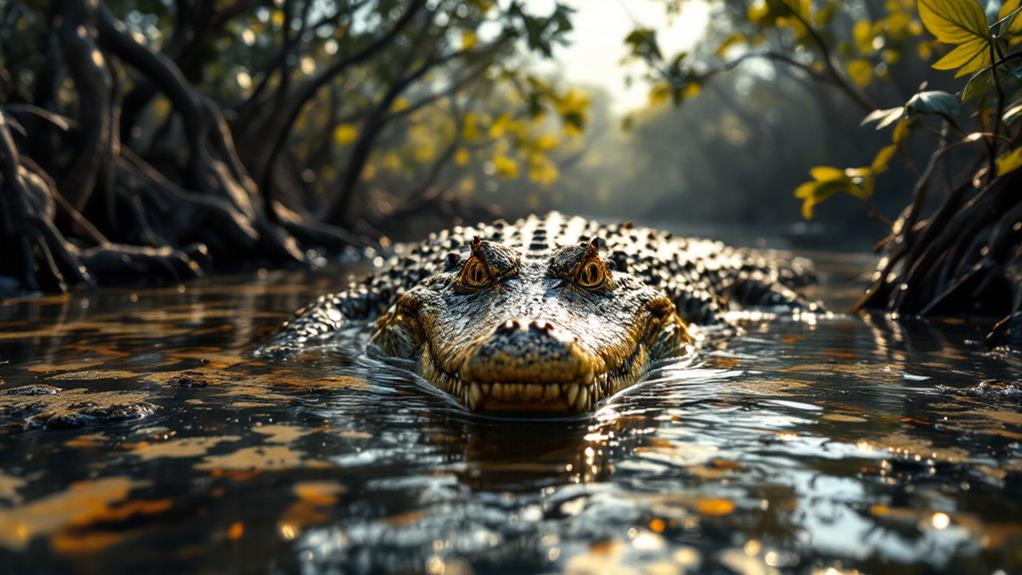
Steering through the diverse and often perilous Australian wildlife requires vigilance and respect for the creatures you encounter. Human interaction with dangerous animals like the Eastern Brown Snake or crocodiles can occur unexpectedly, especially in wildlife habitats close to urban areas. Awareness of your surroundings is vital to ensuring safety, as these venomous snakes and other hazardous creatures are sometimes found near homes and parks.
Misunderstandings about animal behavior can lead to dangerous encounters. For instance, while kangaroos seem harmless, they can become aggressive if they feel threatened. Educating yourself on initial aid for bites and stings can be lifesaving. Immediate medical attention is fundamental, especially with venomous creatures such as the stonefish and box jellyfish. Knowing how to react in these situations improves your safety and well-being.
Conservation efforts play a key role in minimizing human-wildlife conflicts. Responsible tourism practices promote awareness of local dangerous species and help foster a safer coexistence. By respecting wildlife habitats and understanding the behaviors of the creatures within them, you can enjoy Australia's natural beauty without unnecessary risk. Remember, caution and preparedness are your best allies in traversing these fascinating yet potentially dangerous environments.
Conservation and Education Efforts
Understanding and respecting Australia's wildlife is not just about personal safety; it's also about contributing to crucial conservation and education efforts. By taking part in initiatives aimed at conserving endangered species, including dangerous ones like the inland taipan and the great white shark, you help guarantee the preservation of biodiversity in Australia. Responsible tourism and habitat preservation are key elements in these efforts, promoting a balance between human activities and wildlife conservation.
Educational programs play a fundamental role in raising awareness about the ecological importance of dangerous wildlife. Institutions like Australia Zoo and numerous wildlife organizations provide resources to educate you on safety precautions and understanding animal behavior. This knowledge helps prevent dangerous encounters and fosters a deeper respect for these creatures' roles in their ecosystems.
To further involve yourself in conservation and education, consider:
- Participating in public engagement campaigns that teach community safety when interacting with wildlife.
- Utilizing resources like interactive quizzes and websites to improve your awareness of Australia's dangerous animals.
- Supporting research initiatives that study human impact on dangerous species, aiding in the creation of strategies to maintain biodiversity.
Your involvement can make a significant difference in preserving Australia's unique wildlife.
